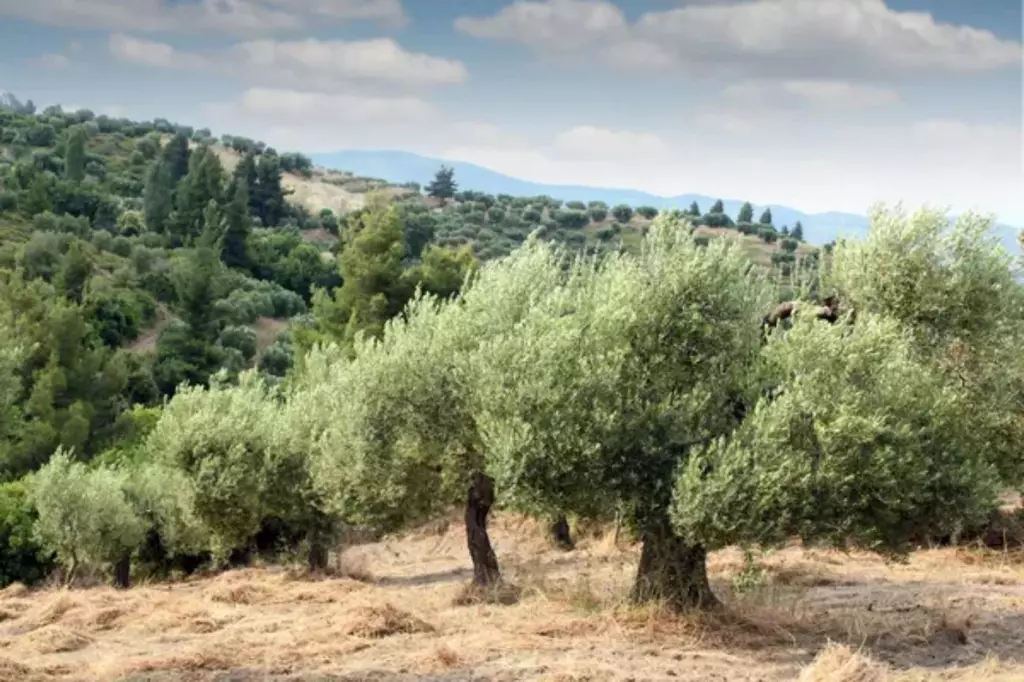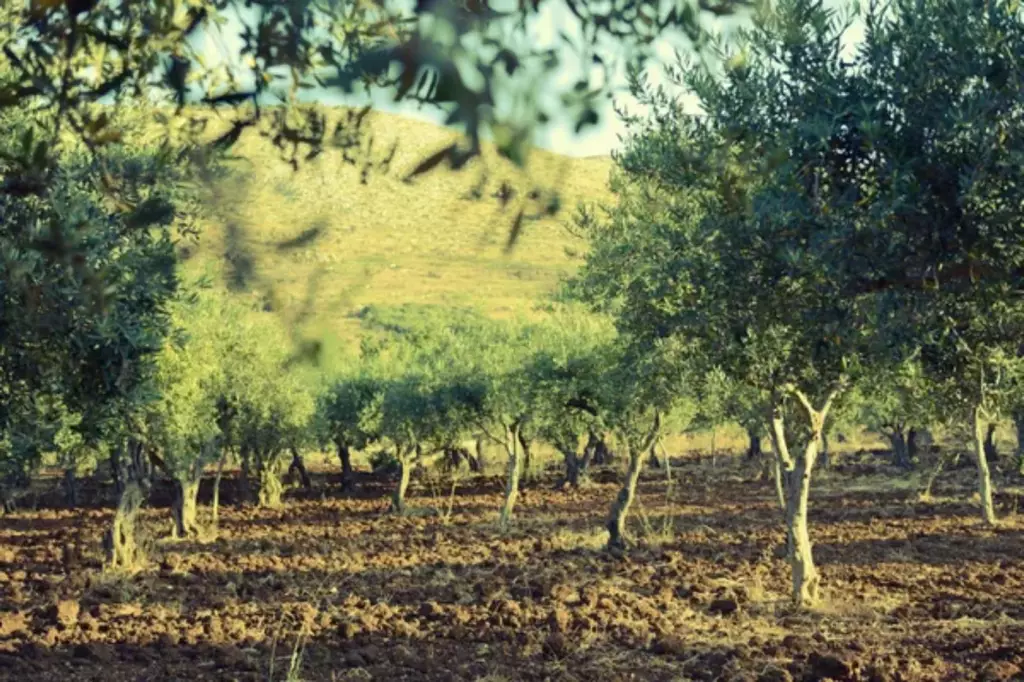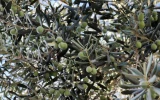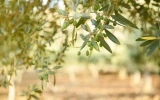Where Do Olive Trees Grow in the US? (Best Growing Zone)
The ideal growing conditions in the US have allowed for more than 30,000 acres dedicated to olive cultivation across the country. Over 95% of the commercial olive production is concentrated in California, with the industry contributing significantly to the state's agricultural output. In this article, we will explore the geographical distribution and cultivation practices of olive trees within the United States, focusing on the best growing zones for these trees.
Olive trees thrive in the US primarily in USDA Hardiness Zones 8-11, with optimal growth in regions like California, Texas, Arizona, and Florida. These zones offer the Mediterranean-like climate olive trees prefer, with mild winters and hot, dry summers. California is especially renowned for its olive oil production.
Olive trees can also grow in Zone 7, given that the variety planted is cold-resistant. As you read further, find out which olive tree varieties are cold-resistant.
Summary
- Olive trees thrive in the US within regions that offer a Mediterranean climate, notably in parts of California, Arizona, Texas, Oregon, and Georgia, due to their need for long, hot summers and cooler winters.
- California is the leading producer of olives in the US, reflecting the state's ideal Mediterranean climate, which supports both olive growth and high-quality olive oil production.
- Olive trees can be grown in a wider range of US climates (Zones 7-11) with proper care, including choosing cold-hardy varieties for cooler zones and ensuring adequate protection from cold snaps.
- Common olive cultivars in the US, such as Arbequina, Arbosana, and Mission, are chosen for their adaptability, oil yield, and flavor, catering to both oil production and table olive markets.

On this page:
Geographical Distribution of Olive Trees in the USA
When you're planting olive trees in the US, your best bet is to find a location that mimics the Mediterranean climate. This climate zone is characterized by mild, wet winters and warm, dry summers—an environment where olive trees thrive.
In the US, the best-growing zones for olive trees are in parts of California, Arizona, Texas, Oregon, and Georgia. These areas provide the long, hot summers and cooler winters that olive trees need to produce fruit.
| Region | Climate Characteristics | Suitability |
|---|---|---|
| California | Mediterranean; long summers, mild winters | Highly suitable |
| Arizona | Similar to Mediterranean; desert-like in parts | Moderately suitable |
| Oregon | Cooler; Mediterranean-like in some areas | Moderately suitable |
| Texas | Variable; Mediterranean-like in some areas | Moderately suitable |
| Georgia | Humid subtropical; mild winters | Moderately suitable |
For instance, California's climate mirrors the Mediterranean's, making it ideal for olive cultivation.
You might be curious about Mediterranean-like climates elsewhere. Regions in Europe, particularly around the Mediterranean Sea, are naturally perfect for olive trees. Similarly, certain areas in Australia, South America, and Africa share these favorable conditions.

Remember, while you might be tempted to try planting olive trees outside these regions, success largely depends on mimicking their best climate requirements. It's not just about surviving; it's about letting your olive trees flourish with the right care in the right place.
What States Grow the Most Olives?
In the U.S., your best bet for finding olive groves is in California. This state is the leading American producer, with an impressive output that reached 4 million gallons of olive oil in recent years.
California's olive oil has seen substantial growth, dwarfing its production from the early 2000s.
However, olives aren't exclusive to California. Here’s a glance at where else your olive oil could come from:
Texas boasts a hardy variety of olive orchards
Texas has emerged as a significant player in the olive industry, especially in recent years. The state's warm climate, particularly in regions like the Hill Country, is suitable for olive cultivation.
Texas olive growers focus primarily on olive oil production, with varieties such as Arbequina, Koroneiki, and Picual proving to be popular and well-suited to the state's conditions.
Georgia is a rising player in the olive industry
Georgia is another state where olive cultivation has been expanding. The state's climate, especially in its southern regions, is favorable for growing olives.
Like Texas, Georgia's olive industry is relatively new but growing, with an emphasis on olive oil production. Farmers in Georgia are experimenting with various olive varieties to determine which are best suited to the local climate and soil conditions.
Florida offers favorable conditions for olive cultivation
Although the olive industry in Florida is smaller compared to states like California and Texas, there is interest and potential for growth, particularly in northern Florida.
The state's olive farmers are exploring the cultivation of both table olives and olives for oil, with a focus on identifying varieties that can thrive in Florida's unique climate.
Oregon has a surprisingly suitable climate on the state's west side
Oregon, particularly its southern regions, has also seen interest in olive cultivation. The state's climate, which can resemble the Mediterranean in some areas, allows for the production of both table olives and olive oil.

Although the industry in Oregon is small, there is potential for growth, and some farms have already gained recognition for their high-quality olive oils.
Arizona is known for its unique desert-grown olives
Arizona, with its hot and dry climate, has demonstrated potential for sustainable olive cultivation, primarily focused on olive oil production.
The state benefits from a climate conducive to olive tree growth, especially in central and southern regions. Despite challenges related to water usage and the potential for olives to become invasive, Arizona has implemented regulations and practices to ensure sustainable growth and management of olive farms.
The state is home to a few notable olive farms and mills that focus on high-quality, often organic, olive oil production, emphasizing water conservation and sustainable farming practices.
While Arizona's olive industry might not be as extensive as California's, it has been recognized for producing distinctive, high-quality olive oils.
Best Growing Zones for Olive Trees in the USA
| Zone | Olive Tree Suitability | Reasons | Example Areas |
|---|---|---|---|
| 7 | Possible with care | Needs cold-hardy varieties. Risk in cold snaps. | Northern California, parts of the mid-Atlantic and southern states |
| 8 | Generally good | Mild winters but occasional cold. Protection is needed sometimes. | Parts of Texas, Southeast, and Pacific Northwest coastal regions |
| 9-11 | Ideal | Warm, Mediterranean-like climate. Best for growth and fruit. | Southern California, southern Texas, Florida, parts of the Gulf Coast |
Cold-resistant olive tree varieties can grow in Zone 7
Zone 7 experiences cooler temperatures that can challenge olive trees, especially during winter. Cold snaps below 20°F are particularly risky.
Varieties like Arbequina and Mission are known for their resilience in cooler temperatures, making them suitable choices for Zone 7. These varieties can survive brief cold periods if they are given adequate protection. You can find other cold-resistant olive varieties in this article.
This zone includes parts of Northern California, the mid-Atlantic states, and southern states up to the Appalachian Mountains. It's a mixed region with varying microclimates.

Zone 8 is generally suitable for olive cultivation
Olive trees are generally suitable for Zone 8, though there's some risk of cold damage. The climate is milder compared to Zone 7, making it more conducive to olive tree growth.
During unexpected cold weather, especially when temperatures drop below 20°F, providing some form of protection (like covering the trees or using windbreaks) can be beneficial.
This zone encompasses coastal regions of the Pacific Northwest, much of the Southeast, parts of Texas, and areas of the desert Southwest. It offers a good balance of warmth and mild winter conditions for olive trees.
Zones 9-11 offer the most optimal conditions for olive trees
With long, warm summers and mild winters, Zones 9 to 11 provide the perfect environment for olive trees to thrive. These conditions closely match those of the Mediterranean region, where olive trees originate.
Olive trees in these zones are likely to grow well and produce abundant fruit, thanks to the ideal climate conditions.
Southern California, southern Arizona, southern Texas, Florida, and parts of the Gulf Coast fall into these zones. These areas are well-suited for cultivating a wide range of olive varieties without the need for cold protection measures.
Common Olive Cultivars in the US
Arbequina, Arbosana, and Mission are some of the most common varieties you'll find. They grow particularly well in USDA Zone 8, which includes parts of the west coast and the southern states.
-
Arbequina: This Spanish cultivar adapts well to various conditions and is known for its high oil yield, making it an excellent choice for producing olive oil.
-
Mission: Originating from California, the Mission olive is versatile and equally good for making oil or table olives.
-
Arbosana: Similar to Arbequina in its adaptability, the Arbosana variety also produces a high quantity of flavorful olives.
Other popular cultivars include Manzanilla and Manzanillo—favorites for table olives—while Koroneiki, Picholine, Frantoio, Pendolino, and Leccino are primarily valued for their superior olive oils.
Each variety brings its unique characteristics, such as the size of the fruit, taste, and oil content, which directly influence their suitability for growing olives for oil or table use. Choose your cultivar wisely based on what your end goal is—be it for pressing oil or enjoying whole olives.
How to Grow Olive Trees in the US
Understand their climatic requirements
Olive trees perform best in regions that provide a Mediterranean climate, which includes plenty of sun and full sun exposure.
Temperatures for olive trees should typically be within the range of 60ºF to 90ºF, but they can tolerate higher mercury spikes. Be mindful that olives need a certain number of chill hours—cold periods which are crucial for their growth cycle—but they have low cold tolerance.
They don't fare well in freezing temperatures, so where winters get cold, select a site that minimizes frost exposure.
When considering hardiness zones, you'll find olive trees are best suited to zones 9 to 11 in the US. However, with proper care, some hardy varieties can also grow in zone 8.

Olive trees become increasingly vulnerable to cold as the elevation rises, so optimal growth usually happens at lower elevations without heavy winds. Also, keep in mind that a mature olive tree can withstand colder snaps better than younger ones.
Regular winds are tolerable, but strong and cold winds can damage both the trees and fruit production.
Soil preferences of olive trees
Olive trees thrive in well-drained soil that emulates their native Mediterranean climate. For the best results, aim for a mix that includes sand, silt, and clay.
To ensure proper olive tree care, focus on the soil's drainage. Well-draining soil is non-negotiable as olive trees' roots risk rot in waterlogged conditions.
Your chosen location needs to allow water to pass through effectively, preventing moisture from accumulating around the root ball.
Here are some quick gardening tips for optimal growing conditions:
- Use a potting mix designed for drainage if planting in pots.
- Incorporate gravel or sand to enhance drainage, especially in garden beds.
- Test soil pH; it should be between 6.0 and 8.0 for olive trees.
- Adjust the soil pH by adding lime or sulfur, based on whether you need to raise or lower its level.
Water needs and irrigation practices
Initially, young olive trees require weekly watering to establish their root systems. As they mature, reduce your watering schedule to every 10-15 days during summer and monthly during off-peak seasons.
Be sure to water thoroughly, allowing for deeper soil penetration which promotes strong root development.
Olive trees are fairly drought-tolerant, yet regular irrigation is essential, especially in regions with limited rainfall.
Implementing a drip irrigation system can be beneficial, providing a slow, steady amount of water that mimics natural rainfall, which helps your trees thrive without overwatering.
Proper irrigation also helps manage nutrients and prevents the leaching away of crucial micronutrients.
Your trees' water needs may also vary with your climate and soil conditions. Pay attention to the specific requirements, and apply fertilizer carefully, as excessive amounts can increase water consumption and promote unwanted growth.
Dealing with pests and diseases
When keeping your olive trees healthy, being proactive in pest and disease management is key. Regular maintenance such as proper pruning encourages good air circulation. This can prevent the establishment of pests and some diseases.
Fertilization should be well-balanced to avoid excessive nitrogen. Too much nitrogen can make trees more susceptible to attacks.
Pests that you may encounter include the olive fruit fly and scale insects. For these pests, consider using organic methods like traps or biological controls.
For example, you can use neem oil to manage infestations and deter these unwanted visitors. Diseases like Verticillium wilt pose a serious threat to olive trees.
To reduce the risk, ensure you plant olive trees in well-drained soils and manage irrigation effectively.
If you detect signs of disease, you may need to remove affected limbs or even entire trees to prevent the spread. Fungicides containing phosphorus acid are sometimes used to treat certain fungal diseases in olive trees.
You can find a longer list of olive tree diseases and pests and how to combat them in this article.



